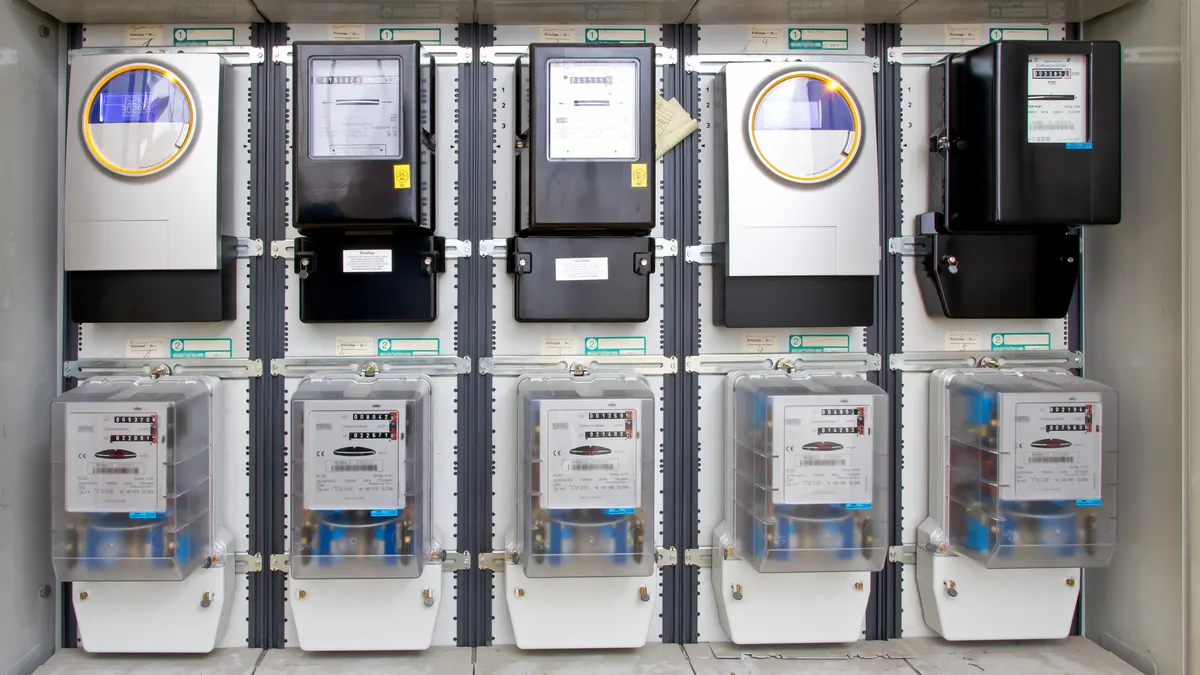Dive Brief:
- In four out of five cases, using various performance incentive mechanisms successfully reduced energy demand, according to a study published Tuesday by Energy Innovation and the American Council for an Energy-Efficient Economy (ACEEE).
- These mechanisms can be targets or thresholds for strategic demand reduction measured in megawatts, that tend to reward utilities through a fixed reward, in its rate of return, through a percentage of program procurement or by allowing them to recover a percentage of their program spending.
- Regulators in seven states awarded participating utilities between 2% and 25% of their investment in program spending to reduce total peak demand and create customer benefits, but the full potential of performance incentive mechanisms is yet to be determined, according to the report. "Additional research will be helpful to determine sort of what the size of the incentive is that we need in order to truly capture the level of [strategic demand reduction] that we're aiming to get," Grace Reff, senior research analyst for ACEEE and co-author of the report, told Utility Dive.
Dive Insight:
13 states have implemented performance incentive mechanisms for at least one utility, according to the report authors. More states could follow and successfully drive down peak demand by establishing review cycles for such mechanisms to continuously improve the system, they added.
"Instead of saying the incentive exists for a year, [it's important to have] a process where regulators come back and revisit the success of the metric, and the success of performance incentive mechanisms in driving the outcomes they want to see, having those touch points or having those review cycles," Rachel Gold, author and ACEEE's utilities program lead, told Utility Dive.
Being able to revisit and calibrate the incentive "enables regulators to adjust the incentives and the things that they're trying to do ... relative to what's happening in wholesale markets," she said.
| State | Incentive | Utility result | Peak demand savings achieved | Duration | Overall |
|---|---|---|---|---|---|
| Hawaii | $500,000 or 5% of aggregate annual contract (whatever is less) | Utilities did not receive payment, project delayed by negotiations | N/A | One year | Missed target |
| Michigan | 15% of demand response spending | Results available in 2020 | N/A | 2019 cycle (one year) | N/A |
| Texas | 10% of net benefits | Utilities kept ~24% of 2015-2017 program spending | 0.82% of peak summer demand in 2017 | One-year cycle | Exceeded target |
| Vermont | 2.5% of total approved budget | Utility earned maximum reward in 2015-2017 cycle | 1.8% of summer peak for 2015-17 | Three-year cycle | Exceeded target |
| Rhode Island | 45% of net benefits | First cycle results available in 2021 | N/A | Three-year cycle | N/A |
| New York | A points system for a portion of various demand reduction achievements | Consolidated Edison was rewarded ~5.2% of spending in 2018. | 0.69% of summer peak in 2018 | Three-year cycle | Met target |
| Massachusetts | 5.4% of cumulative budget for program costs | Utilities earned ~6.5% of program spending 2016-18 | 4.4% of summer peak for 2016-2018 | Three-year cycle | Exceeded target |
Source: ACEEE and Energy Innovation 2020 report
Regulators must create an incentive that is large enough to be financially meaningful, to encourage utility uptake, and to also allow customers to get the most savings out of the performance benefits. This requires more fine-tuning in many states, according to Reff.
"It'll take some time to calibrate, and that's another reason that we wanted to mention the cyclical nature of reviewing the performance incentive mechanisms and really effectively reporting on outcomes as well, so that we can ensure benefits are really improved," she said.
The performance incentive mechanisms are a single element of broader performance based regulation (PBR). Some skepticism remains among economists in the energy field regarding the impacts of such regulation.
"There is a lot of interesting anecdotal evidence but nothing convincing one way or the the other ... I am not convinced" about performance-based regulation, Ahmad Faruqui, rate design expert and principal at the Brattle Group, told Utility Dive. Faruqui did not have an opportunity to review the ACEEE and Energy Innovation report, but he said his study of current state performance based regulations shows all current examples rehash ideas that have already been explored, "from the dust bin of history."
The ACEEE/Energy Innovation report indicates that New York's Reforming the Energy Vision proceedings have included aspects to change the utility business model, such as moving toward performance-based ratemaking, but Faruqui maintains that PBR has yet to be established in New York based on the level of complexity.
Performance based regulation has been around since 1980, he said, when it sprang from a simple formula that gets more complex as regulators aim to include "a whole wish list" of policy incentives.
The seven case studies lay out the various performance indicators or components that make up the "wish list," as Faruqui said, although states crafted the incentives differently.
"The best way to promote energy efficiency actually is through codes and standards ... and that's what we have been doing, but not fast enough," Faruqui said.
The Energy Innovation and ACEEE case studies say additional complementary policies will enhance the effect of performance incentive mechanisms, such as energy efficiency and clean energy targets, and business model reform like utility rate decoupling.
But the two groups also see performance incentive mechanisms "as an emerging best practice where there is a clear win for consumers and the environment that is not being realized because of the structural issues with the existing regulatory model," Mike O'Boyle, director of electricity policy for Energy Innovation, told Utility Dive.
Energy Innovation will continue working with ACEEE and is presenting the results of the study at the ACEEE 2020 Summer Study on Energy Efficient Buildings conference in California this August.















